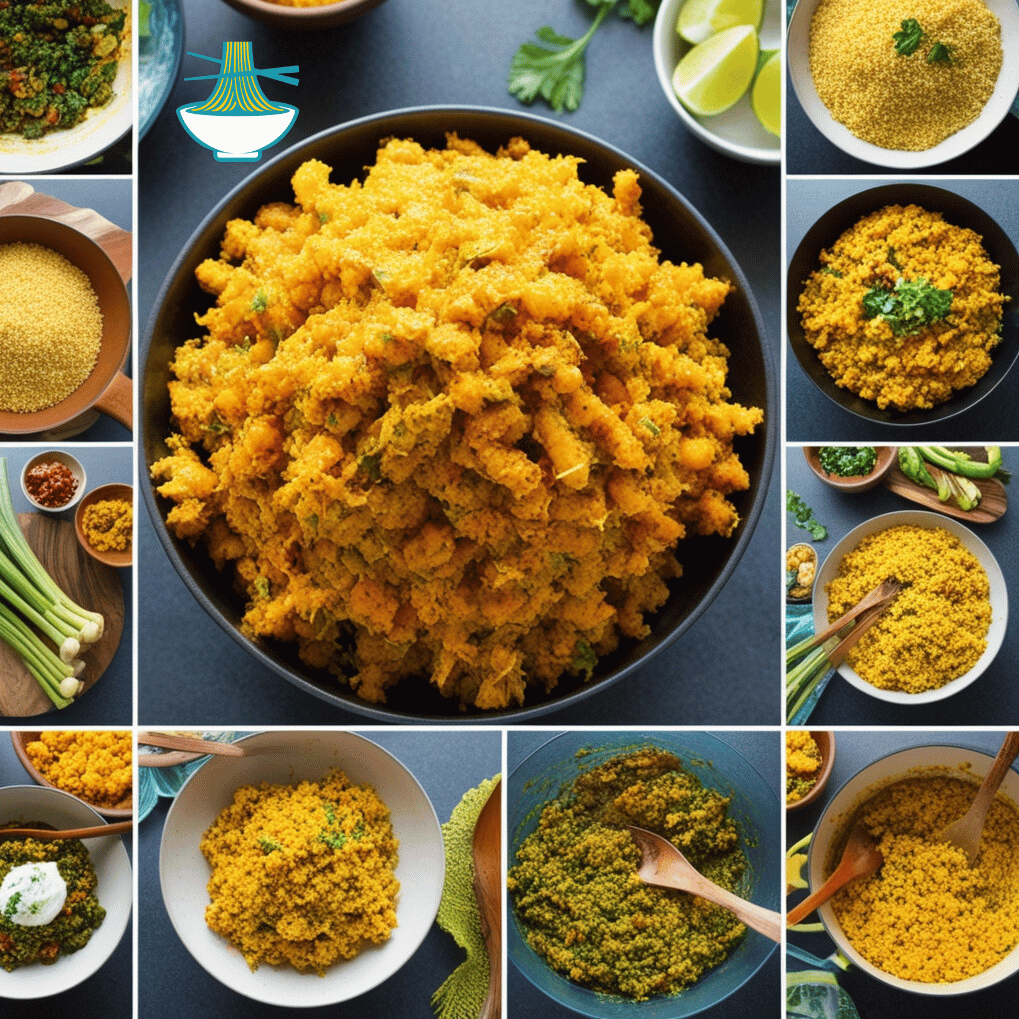Experience the rich culinary traditions of Côte d'Ivoire with our detailed guide on preparing attiéké, a beloved West African dish. Known as fermented cassava couscous, attiéké is a staple in Ivorian cuisine celebrated for its distinctive taste and versatility. This comprehensive recipe provides a step-by-step approach to making attiéké at home, allowing you to explore the depth of Ivorian flavors.

Ingredients:
For Cassava Preparation:
- Fresh cassava roots
- Water (for soaking and rinsing)
For Steaming the Cassava:
- Large pot or steamer
- Water
For Breaking and Drying:
- Trays or clean cloth
For Final Processing:
- Large sieve
Recipe:
Step 1: Cassava Preparation
1. Choose fresh cassava roots. Peel off the brown skin and discard.
2. Grate the cassava finely using a grater or food processor.
3. Squeeze the grated cassava to remove excess moisture, using clean hands or cheesecloth.
4. Place the cassava pulp in a bowl and set aside to ferment for several hours or overnight. This fermentation enhances the flavor and texture of the attiéké.
Step 2: Steaming the Cassava
1. Transfer the fermented cassava pulp to a large pot or steamer.
2. Add water to the pot, ensuring it doesn’t touch the cassava.
3. Steam for 20-30 minutes until the cassava becomes soft and fully cooked.
4. Allow the steamed cassava to cool completely.
Step 3: Breaking and Drying
1. Once cooled, break the steamed cassava into small, couscous-like pieces using your hands or a fork.
2. Spread the pieces on trays or a clean cloth and dry in a well-ventilated area for several hours, or up to two days, depending on weather conditions.
Step 4: Final Processing
1. Once fully dried, use your hands or a large sieve to remove any lumps or coarse particles, ensuring a fine texture.
2. Store the processed attiéké in a bowl covered with a clean cloth until ready to serve.
Serving Suggestions:
Attiéké pairs well with a variety of accompaniments such as grilled fish, chicken, vegetables, or sauces. It can be enjoyed as a main course or a side dish.

Nutrition Value:
1. For Cassava Preparation
Fresh cassava roots
- Calories: Approximately 160 calories per 100g
- Carbohydrates: About 38g per 100g
- Protein: Around 1g per 100g
- Fat: Less than 1g per 100g
- Sodium: Negligible
- Cholesterol: None
- Vitamins: Rich in vitamin C; contains small amounts of B vitamins
- Minerals: Good source of potassium, magnesium, and calcium
- Nutritional Benefit: Fresh cassava roots are a high-carbohydrate food that provides energy. They are also rich in potassium, which helps regulate blood pressure, and offer vitamin C for immune support.
Water (for soaking and rinsing)
- Calories: 0
- Carbohydrates: 0
- Protein: 0
- Fat: 0
- Sodium: 0
- Cholesterol: 0
- Vitamins: 0
- Minerals: 0
- Nutritional Benefit: Water is essential for hydration and facilitates the preparation of cassava by removing excess moisture, but it does not provide any nutrients.
2. For Steaming the Cassava
Large pot or steamer
- Calories: N/A
- Carbohydrates: N/A
- Protein: N/A
- Fat: N/A
- Sodium: N/A
- Cholesterol: N/A
- Vitamins: N/A
- Minerals: N/A
- Nutritional Benefit: The large pot or steamer is used for cooking the cassava but does not contribute any nutritional value.
Water
- Calories: 0
- Carbohydrates: 0
- Protein: 0
- Fat: 0
- Sodium: 0
- Cholesterol: 0
- Vitamins: 0
- Minerals: 0
- Nutritional Benefit: Water used for steaming helps to cook the cassava but does not add any nutritional value to the dish.


Comments